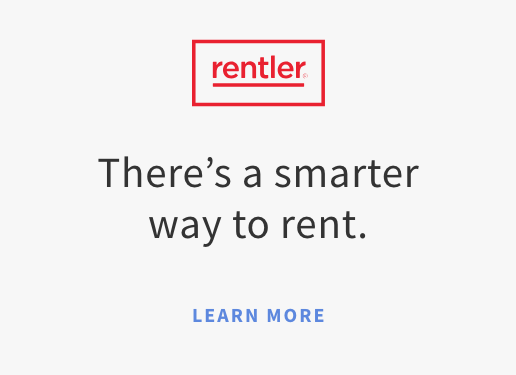Despite the obstacles brought about by the COVID-19 pandemic, the United States home rental market has continued to show steady growth. In 2021, the apartment rental industry’s market size is valued at $169.5 billion. Average rent prices also indicate a generally upward trend in recent years, particularly in certain states such as Idaho and Washington.
There are fewer rental accommodations available each year, most likely due to the increasing demand for houses and apartments for rent. The numbers below illustrate the current rental climate for the country’s renters.
Costs of Renting
The latest statistics on home rental costs show that the average rent across the country significantly varies from state to state. While monthly rent has increased for the majority of states, average asking rents have dropped for only a handful of areas. On the whole, however, rent growth continues across the country.
- National year-over-year rent growth is now at 5.4%.
- The median home rent in the US is $1,588, while the average monthly apartment rent stands at $1,124.
- A quarter (25.5%) of tenants spend at least $1,500 of their monthly income on rent. With these figures, nearly a third (31%) of the income of the average renter goes to rent.
- On the whole, tenants pay around $485 billion annually on rent.
- Of the top 100 housing markets in the country, 91 have seen increases in rent.
- Boise (31%), Washington (22%), and California (17%) have seen the highest annual increase in monthly rental rates since March 2020.
- Meanwhile, as of February 2021, monthly apartment rates have dropped most significantly in the District of Columbia (13.3%), Massachusetts (9.4%), and North Dakota (8.8%).
More tenants are also now looking for mid-sized accommodations that offer more space. This higher demand for multiroom rental homes may be driven by tenants who want to build a home office for remote work.
- The District of Columbia charges the highest average monthly rent for studio apartments ($1,625 each month) and one-bedroom apartments ($1,574 each month).
- On the other end of the spectrum, studio apartments and two-bedroom apartments are most affordable to rent in Arkansas ($577 per month and $770 per month, respectively).
- The most affordable one and three-bedroom apartments are in West Virginia ($584 and $913 monthly rent on average, respectively).
- Hawaii leads the country in monthly rent prices for larger apartments (four to five bedrooms), with tenants paying $2,697 to $3,180 each month. Hawaii is also the most expensive state for tenants of 2 to 3-bedroom apartments ($1,922 monthly rent on average).
The Impact of COVID-19 on Tenants
The COVID-19 pandemic has had a significant impact on tenants and their ability to pay rent on time. From 2019 to 2020, numerous households across the country became cost-burdened, meaning housing costs exceeded 30% of the family income. For many families, after paying housing costs, the household budget is stretched even further when other major expenses come into play, such as the cost of college tuition and car payments.
To help ease the burden of housing costs, the government has provided financial relief assistance to tenants. A federal moratorium on eviction has also been extended till the end of June 2021.
- In 2019, 46% of all households in the US were considered moderately or severely cost-burdened.
- Florida saw the highest percentage of severely cost-burdened renter households, at 28.2%.
- Over a quarter of tenants (28%) have rental debt. For 42% of these tenants, the debt is over $1,000.
- Trends also show that on-time payments dropped by 4% between December and February 2021.
- Despite these numbers, the National Multifamily Housing Council (NMHC)’s Rent Payment Tracker indicates that 77% of apartment households had made full or partial rent payments by June 2021.
Rental Property Demand and Availability
Renting a home continues to be the more affordable option for over a third of US households today. Though vacancy rates have slightly picked up from 2019 to 2020, rental vacancy rates have been decreasing since 2009. These numbers may be helpful if you’re planning to rent a new house soon.
- There were 2.9 million unoccupied rental housing units in the US in the third quarter of 2020.
- As of the third quarter of 2020, the Midwest region of the country had the highest vacancy rate, at 7.8%. The South comes next, with a 7.4% rental vacancy rate.
- According to the latest data, California is home to the highest number of rental units.
- The city of New Haven, Connecticut has the highest percentage of tenants in the country, with over 70% of its population renting a home.
- 44% of rental properties in the country are in suburban areas, while 41% are located in urban areas.
Demographics of Renters in the US
The following numbers outline the demographics of renters in the United States. Nearly 36%, or 44.1 million of US households rent their homes – meaning 109 million Americans are tenants.
- In 2019, 54% of American tenants lived in apartment complexes with more than two units. The second most popular rental accommodation were single family homes, housing 41% of the tenant population.
- Nearly half (49%) of tenants are under 30 years old, while only 9% are 65 years and older.
- 11% of millennial tenants plan to permanently rent rather than buy a house.
- Native Hawaiians and Pacific Islanders make up the smallest demographic of renters at .23%.
- Over a third of tenants (38%) don’t currently own a home because they don’t have enough saved for a down payment. Moreover, the pandemic has prevented 31% of tenants from becoming homeowners.
State of the Recovering Home Rental Market
The rental pricing boom across most states demonstrates how the home rental market has recovered from the 2020 effects of the COVID-19 pandemic. Financial relief packages from the government have also eased the burden of housing costs for many financially challenged tenants, reducing the risk of late or missed payments.
The downward trend of rental vacancy also indicates that demand for rental accommodations remains high. With these tight vacancy rates and with fewer tenants missing rent payments, the real estate rental market is expected to regain its pre-pandemic strength soon.
Sources:




